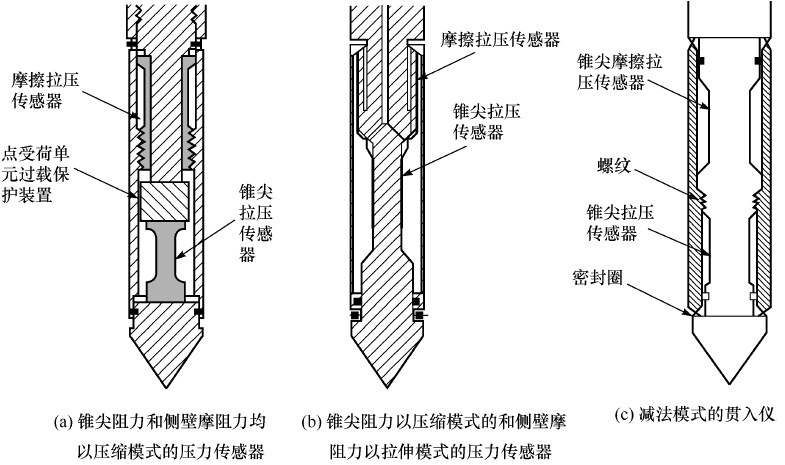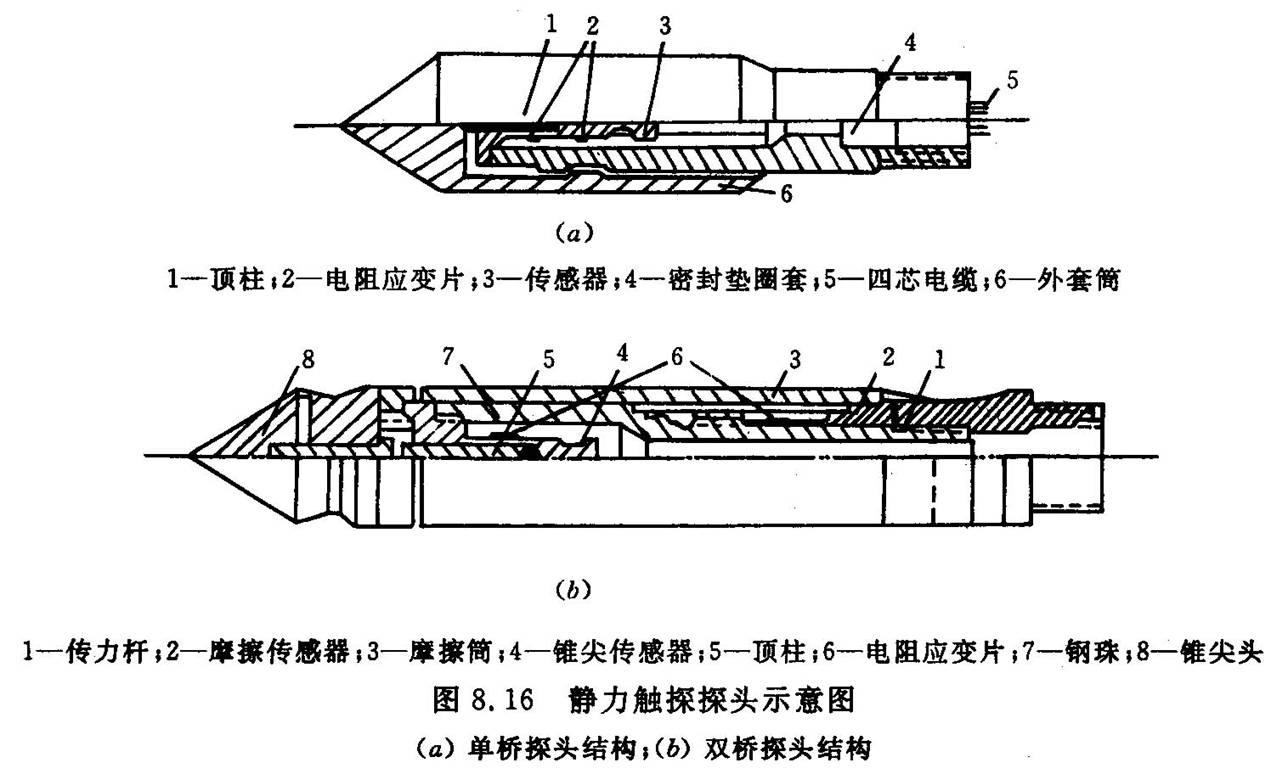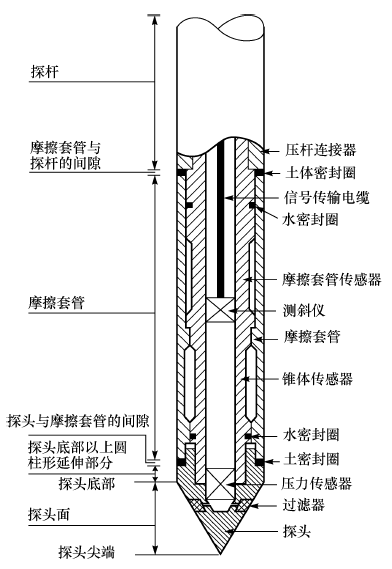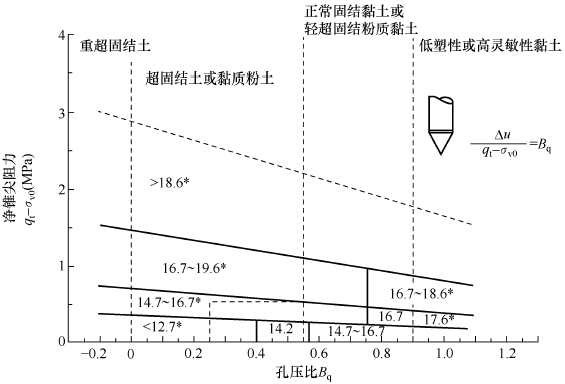论文总字数:48564字
摘 要
近几十年来,我国经济建设高速发展,取得了举世瞩目的成就,相应的土木交通等基础设施建设面临着巨大的技术创新压力。在岩土工程领域,首当其冲的便是岩土工程参数的不确定性,目前规范中对于此类不确定性的解决办法仍停留在单一安全系数等经验方法上。孔压静力触探(CPTU)技术作为一种新型的原位测试技术,由于其精度高、数据连续全面、勿需取样及快速便捷等优点,日益受到岩土工程届的重视。同时,可靠性分析在建筑物上部结构的设计中日益流行起来,建设部也与前不久颁布了相应规范,这使得可靠度设计理论在岩土工程中的运用问题又一次被推上了风口浪尖。本文以浅基础设计为研究对象,结合工程实例,重点对建筑物浅基础设计参数的CPTU确定方法以及可靠度理论在浅基础中的运用进行了研究与资料整理,主要工作内容如下:
- 对现行的浅基础设计及计算方法进行归纳整理,明确浅基础设计的基本内容、设计原则及步骤,着力强调地基承载力及沉降量的计算或确定方法。
- 在对我国原位测试技术发展情况的论述下,展开分析了现代多功能CPTU技术的特点与基本原理,对比了国内外该项技术的发展及使用现状,从中外文献中总结出了基于CPTU的土体物理力学性质确定方法;并结合工程实例,在熟练运用CPTU数据分析软件CONEPLOT与Digital Cleanup的基础上,验证了CPTU技术在参数确定上的高效性与工程实用性。
- 综合土性空间平均的变异性和随机场理论的相关概念,通过对此类文献的整理,在理论层面上简单阐述了土性参数不确定性的由来以及计算分析中涉及到的相应公式;整理归纳了可靠度理论的基本概念及国内外发展现状,在于上部结构可靠度理论的对比中,突出强调岩土工程可靠性分析的特点与亟待解决的问题。
- 基于CPTU技术在浅基础设计中的国内外运用情况,以条形基础为工程案例,结合荷兰现行的CPTU土体锥尖阻力和侧壁摩阻力确定标准NEN 6740,分别考虑砂性土与黏性土这两种地基形式,对条形基础地基承载能力以及沉降变形值进行理论试算。
关键词:原位测试,CPTU,土性参数,浅基础设计,可靠度
Abstract
Since the reform and opening up, our country has been well-known with remarkable achievements in economic constructions, which drives the domestic engineering constructions level into a higher level. In foundation engineering construction, first of all, is the unsolved problem of the geotechnical parameters' uncertainties. By now, the current specification for such uncertainties solutions is still depend on a single safety factor decided by experience method. The piezocone penetration test (CPTU) has already been known by the whole geotechnical field because of its highly testing precision, comprehensive data acquisition, slight disturbance and convenient operation, which also bring the accuracy of the geotechnical parameters to reach a higher level. At the same time, the reliability analysis in the design of building structure is becoming increasingly popular, and the ministry of construction recently issued some corresponding specifications. In this paper, based on the above situations, shallow foundations have been design as this research object. According to the practical engineering, this research keeps focusing on shallow foundation design method which is determining by the CPTU parameters, as well as the application of reliability theory. The main work content is as follows:
- According to the current design codes, summarized the design and calculation methods of shallow foundations and run through the basic content of design's principles and steps. What's more, emphasizing the subgrade limit capacity and settlements calculations or determination methods.
- In the condition knowledge of in situ tests' technical development situations, this paper, make an analysis of the characteristics and basic principles of contemporary multi-function CPTU technology and compared the development and use status of this technology between home and abroad. Also, trying to figure out how to determine the physical and mechanical properties of soil based on CPTU, which is summarized from the Chinese and foreign literature. Combined with engineering example, using the CPTU data analysis softwares such as CONEPLOT and Digital Cleanup to verify the efficiency and practicability of determining parameters with CPTU technology.
- Combined with the spatial variability of soils and the random field theory, by means of corresponding literatures, this paper simply expounds the origin of soil parameters' uncertainties and corresponding formulas that involved in the calculation or analysis at the theoretical level. Compare with the reliability theory of upper structure, this paper highlights the characteristics and problems of reliability analysis in geotechnical engineering which need to be solved indeed.
- In order to strengthen the connection between the design of shallow foundation and CPTU, this paper read the Dutch's standard (Determination of the cone resistance and sleeve friction of soil. NEN 6740) of CPTU for reference and making tentative calculations about strip footings, which is one typical kinds of the shallow foundation, respectively upon two kinds of situations: sand and clay. The tentative calculations mainly focus on the subgrade limit capacity and settlements calculations of strip footing.
Key words: in situ testing, CPTU, soil parameters, shallow foundation, reliability;
目 录
摘要 I
Abstract II
第一章 绪 论 1
1.1引言 1
1.2国内外研究现状 2
1.2.1 现代多功能CPTU发展现状 2
1.2.2 岩土工程可靠度研究现状 3
1.3本文主要研究内容和技术路线 4
1.3.1 研究主要内容 4
1.3.2 研究技术路线 5
1.4本章小结 6
第二章 浅基础设计内容及基本方法 7
2.1浅基础设计概述 7
2.1.1 浅基础的类型 7
2.1.2 浅基础设计内容与步骤 8
2.1.3 浅基础设计基本原则 8
2.2浅基础设计计算内容 9
2.2.1 确定基础的埋置深度 9
2.2.2 地基承载力的确定方法 9
2.3 本章小结 10
第三章 基于高精度CPTU的岩土参数确定方法 11
3.1 高精度CPTU技术研究现状 11
3.1.1 CPTU技术的基本原理 11
3.1.2 国内外基于CPTU的参数确定现状及对比 14
3.2 基于CPTU测试的土性参数的确定方法 15
3.2.1状态特性参数 16
3.2.2 强度特性参数 17
3.2.3 变形特性参数 19
3.2.4 固结与渗流特性参数 20
3.3 CPTU工程实例 20
3.4 本章小结 24
第四章 土性参数的变异性及可靠度理论 25
4.1 土性参数变异性分析 25
4.1 1参数的不确定性 25
4.1.2土性空间平均变异性和随机场理论 25
4.2 岩土工程中的可靠度理论 27
4.2.1可靠度理论的基本概念 27
4.2.2 可靠度理论的发展及研究现状 29
4.2.3 存在的问题 30
4.3 本章小结 31
第五章 考虑参数变异性后的CPTU浅基础设计 32
5.1 浅基础可靠性分析特点 32
5.2 基于CPTU的浅基础计算实例 33
5.2.1 砂性土中条形基础的地基承载力及沉降计算 37
5.2.2 黏性土中条形基础的地基承载力及沉降计算 38
5.3 本章小结 40
第六章 结论与展望 41
6.1 结论 41
6.2 不足与展望 41
致谢 43
参考文献 44
第一章 绪 论
1.1引言
改革开放以来,随着我国经济建设水平的日益提高,城市化和大型基础设施的建设可谓真正走上了日新月异的发展道路,曾今在工程规模和技术难度上的自卑心理早已不见,取而代之的是工程规模和设计水平也达到空前水平。然而,岩土参数确定和设计方法的不合理性经常导致工程设计地不断变更、沉降与承载能力计算可靠度低等问题的出现,甚至出现重大工程安全事故。岩土体是自然的历史产物,具有复杂多变的特性,岩土工程参数的确定和合理有效的设计往往是工程建设的难点,也是达到工程质量要求、降低工程总体造价、缩短施工周期、提高工程社会效应和经济效应的首要解决问题之一。我国一直所采用的钻孔取样再加室内进行试验分析,常常在取样、搬运及实验过程中造成土体的扰动,实验结果难以反映地基岩土体的真实情况[1]。而原位测试技术则是一种在施工现场直接进行试验来起到评价地基岩土工程性质的方法,简便快捷,不需要取样到实验室进行再实验,避免了土体的扰动,是获得岩土工程参数的最有效方法[2]~[3]。尤其是近年来我国孔压静力触探(piezocone penetration test, CPTU)技术,即多功能CPTU测试技术的研究和发展,使得原位测试技术再上新的高度。然而我国在CPTU上的发展自20世纪90年代开始便滞后于国际水平,目前还是主要采用传统的单、双桥CPT技术,两者在规范化、功能扩展包括工程应用方面都有不小的差距。因此,推广并扩大对于CPTU技术的运用迫在眉睫。
同时,基础是建筑物的根基,大树无根自倒,可见基础作为建筑物的根,它在功能和结构上都起着至关重要的作用,简单来说,便是将建筑物的上部荷载安全可靠地过渡给地基土体,达到上部结构的稳定,并且长久地保持结构的整体稳定性就是基础需要承担的重大责任。很多因素能够对合理可靠的地基基础型式的选取与确定产生影响,这其中包括上部结构形式、工程地质条件、基础造价、工期和施工、外荷载大小及其特性等。在一定相关条件下,从施工条件、经济合理性、工程量及工程期限等角度来说,浅基础的优势十分明显;从国家社会和民生经济以及工程的实际应用性能等角度来看,在数之不尽的基础设计方案中,采用浅基础可以说是最能够达到指定要求的,浅基础不仅仅充分利用了地基的承载能力问题,而且施工起来简单便捷、工期相对而言较短,工程量及基坑开挖的土方量都是基础里面最少的。“在满足地基稳定和变形要求的前提下,基础宜浅埋,当上层地基的承载力大于下层土时,宜利用上层土作持力层”,这正是我国现行的 《建筑地基基础设计规范》 (5007-2002)[4]中所明确要求的。浅基础的应用今后将呈现发展的态势,如何完善其设计计算过程,使浅基础能够更加合理可靠地运用于各种岩土环境下,是基础设计这方面的重要问题。本文便是致力于将CPTU技术有机地与浅基础设计相结合,在提高基础设计可靠度的同时,推广CPTU测试的使用范畴。
剩余内容已隐藏,请支付后下载全文,论文总字数:48564字
相关图片展示:





该课题毕业论文、开题报告、外文翻译、程序设计、图纸设计等资料可联系客服协助查找;


